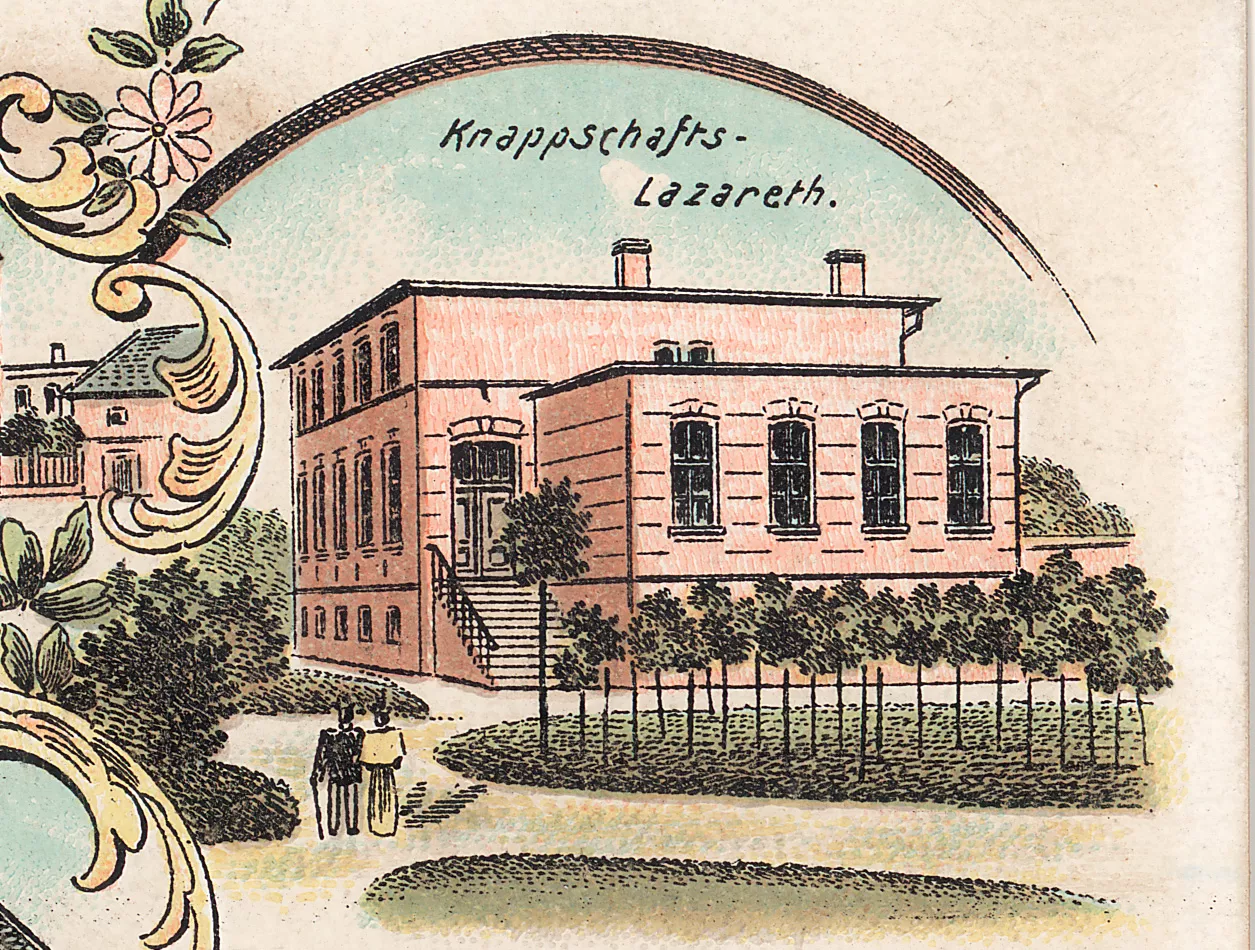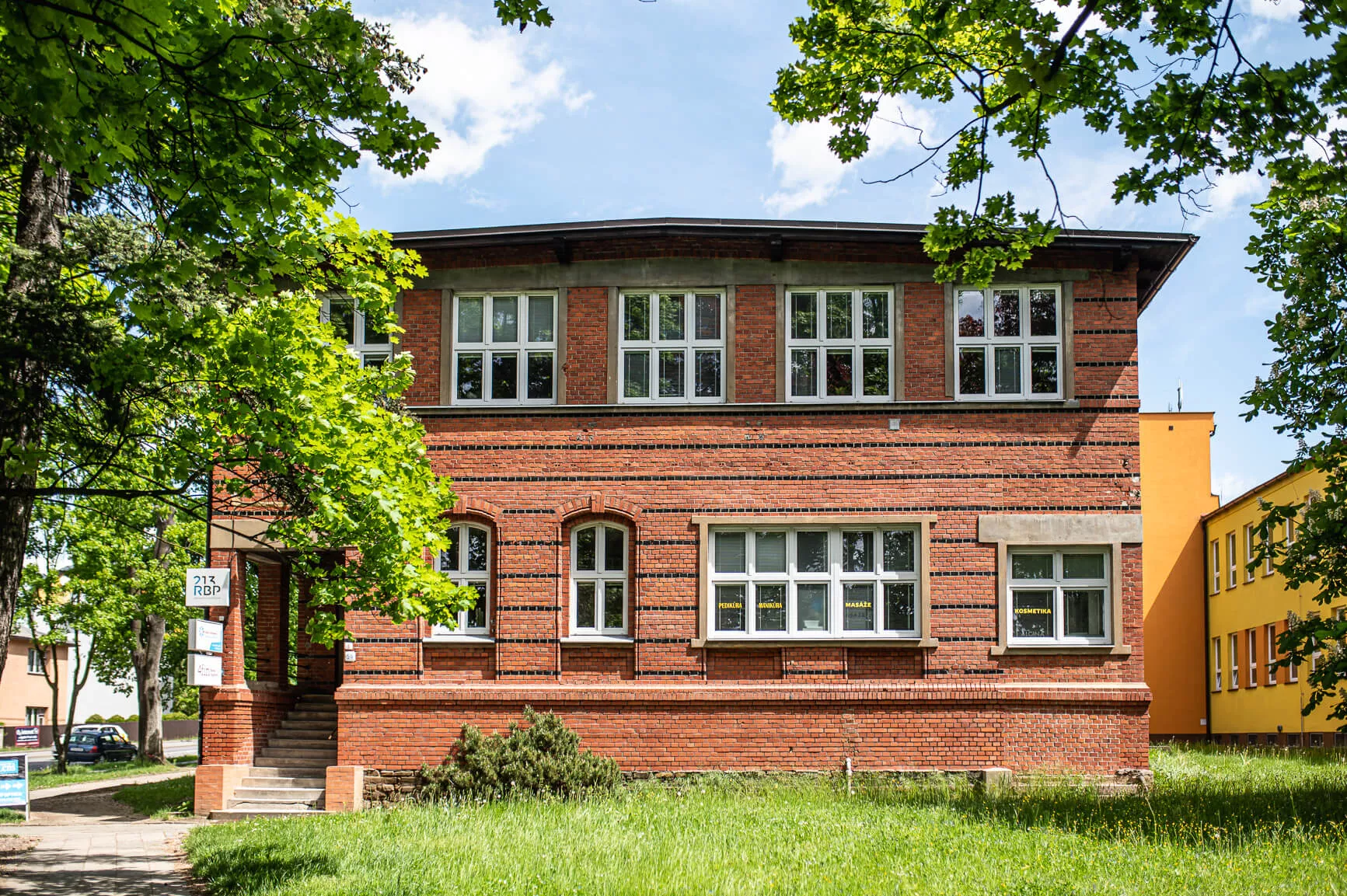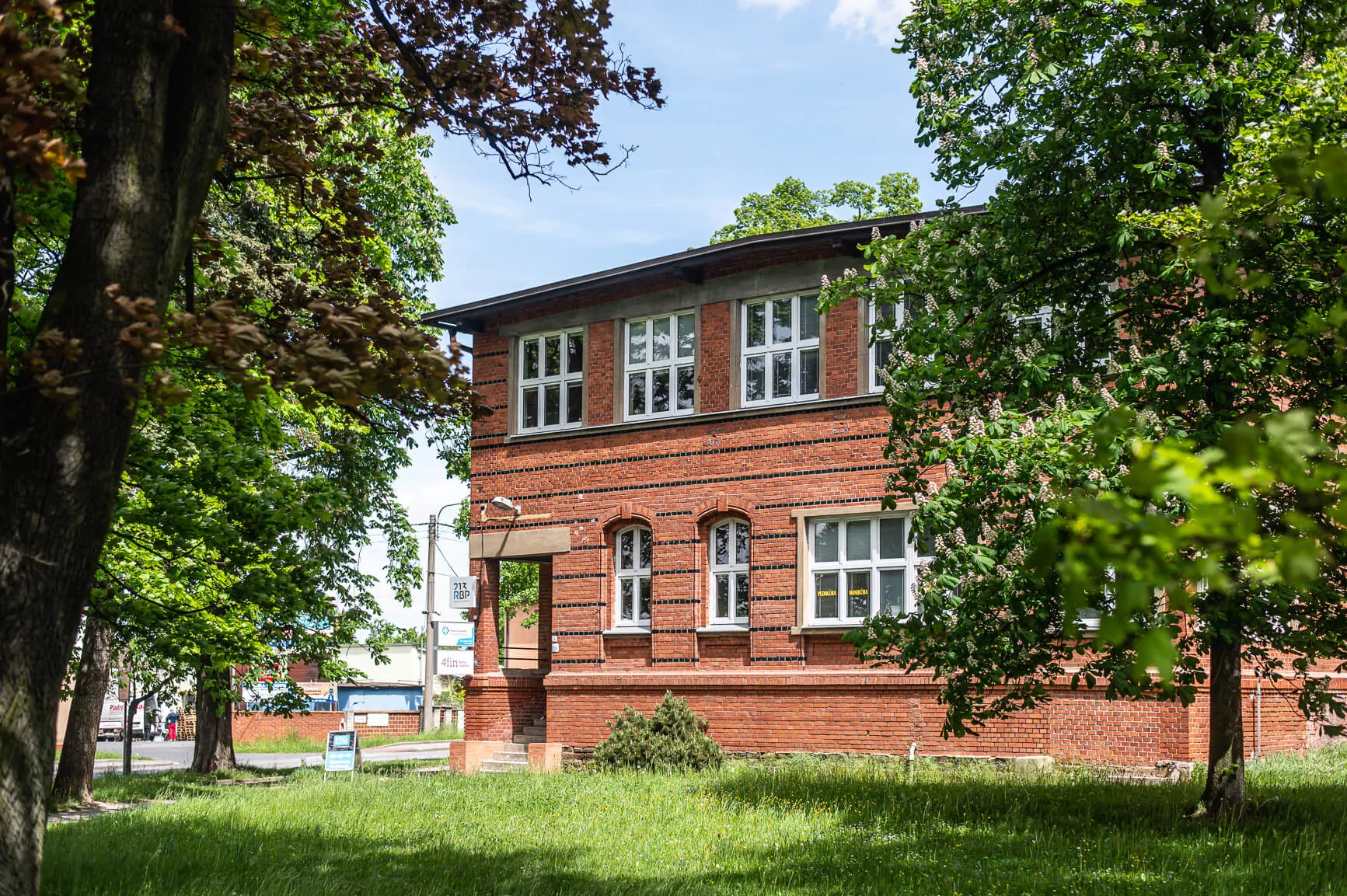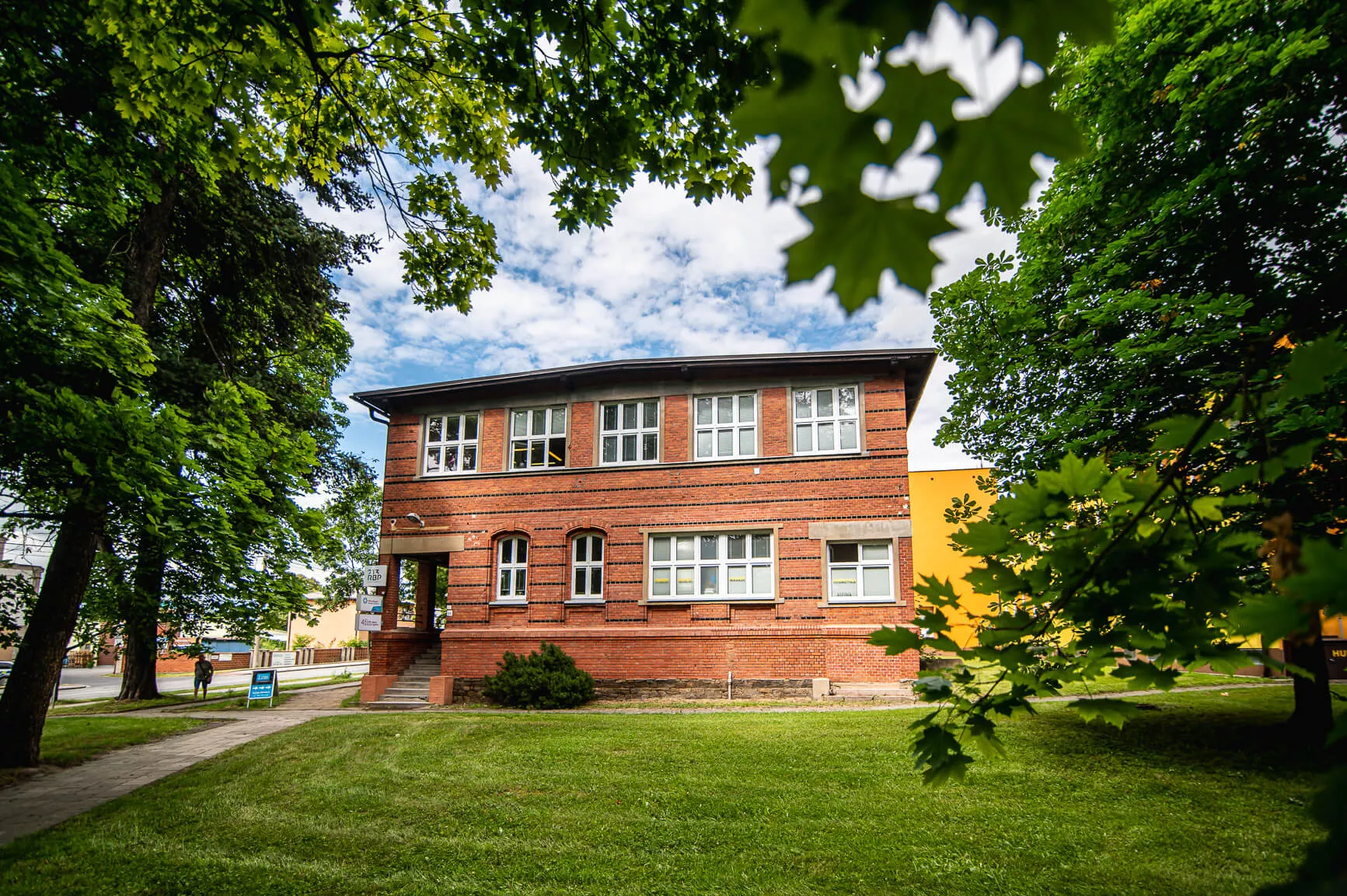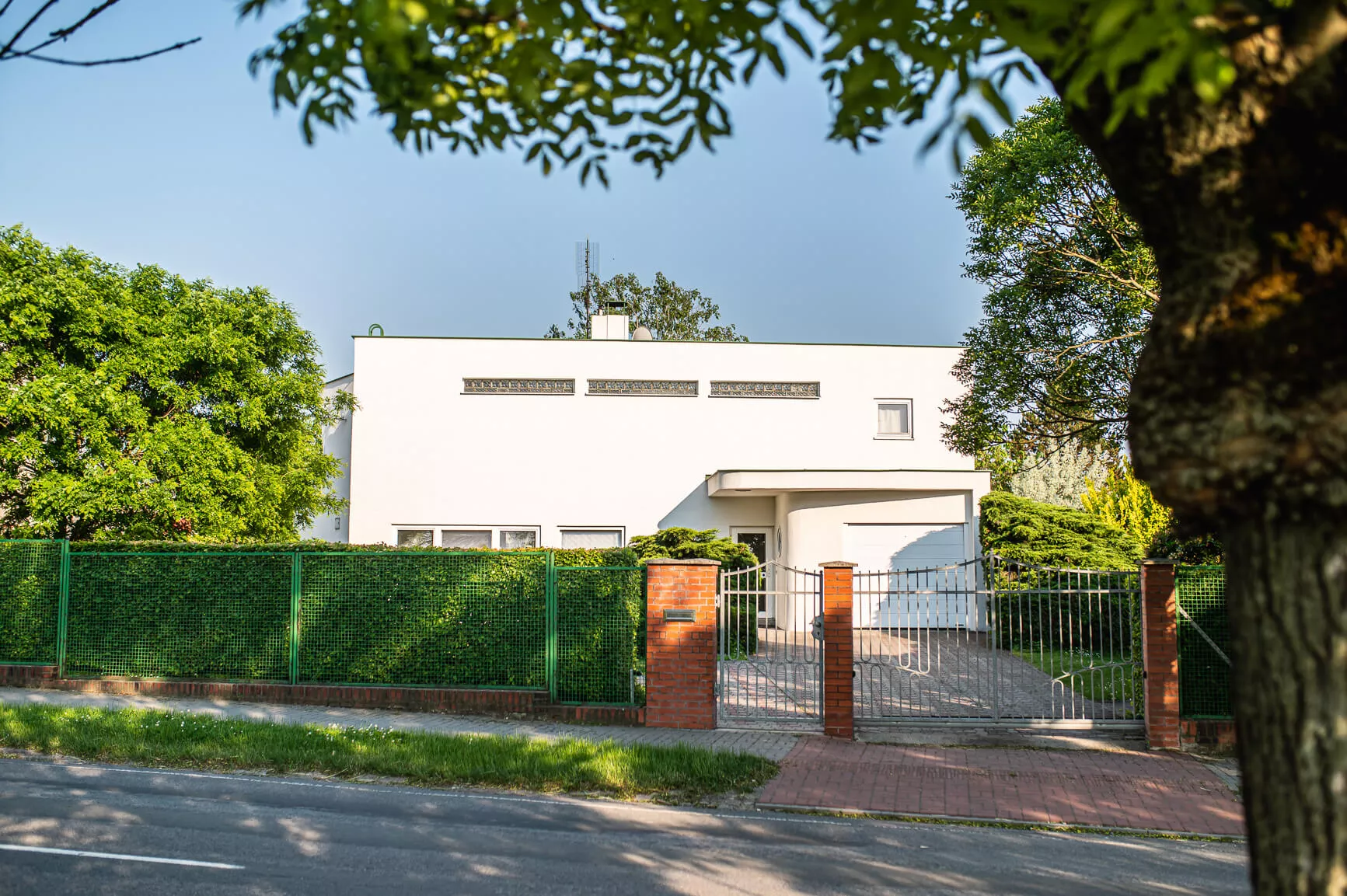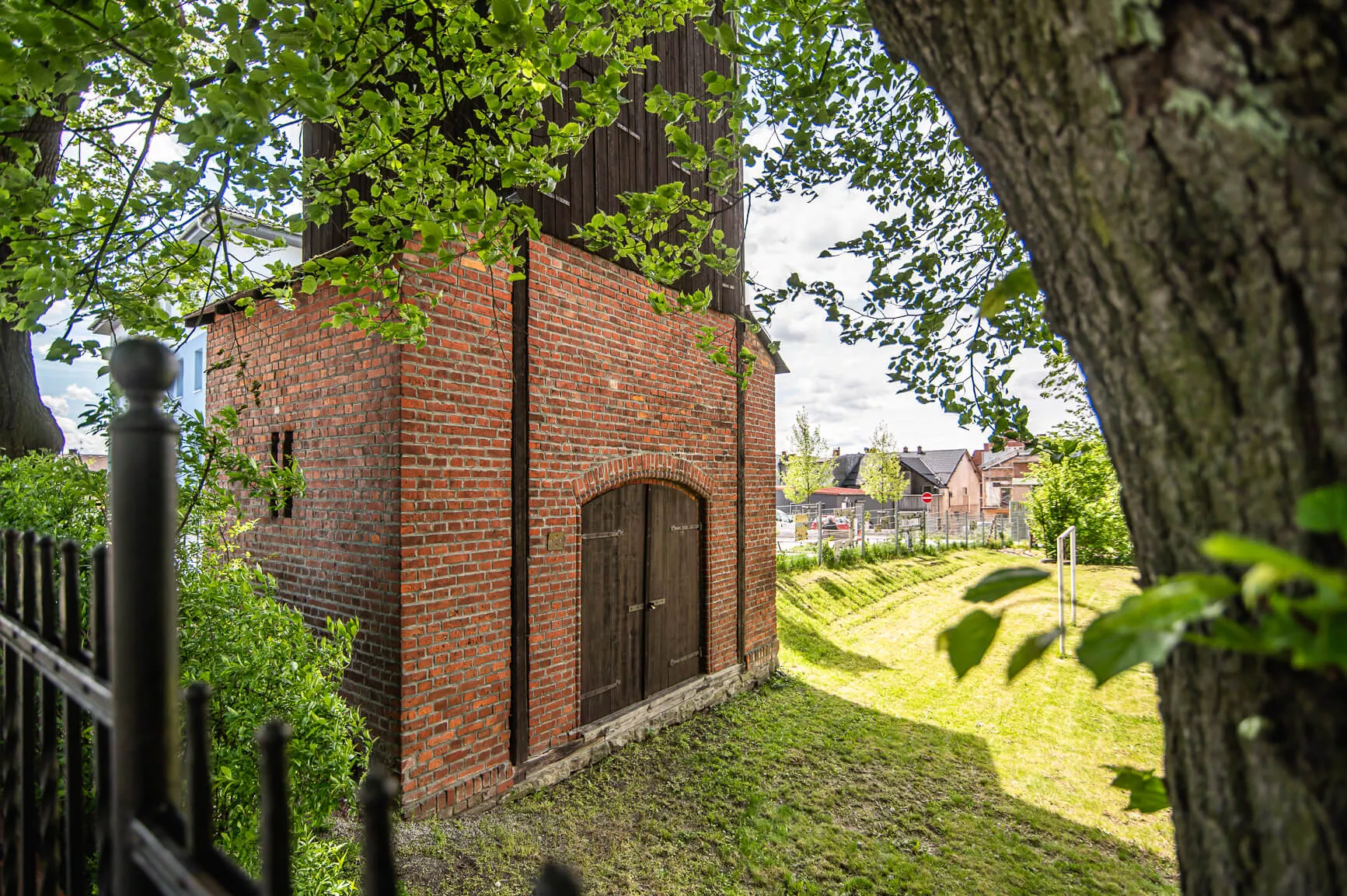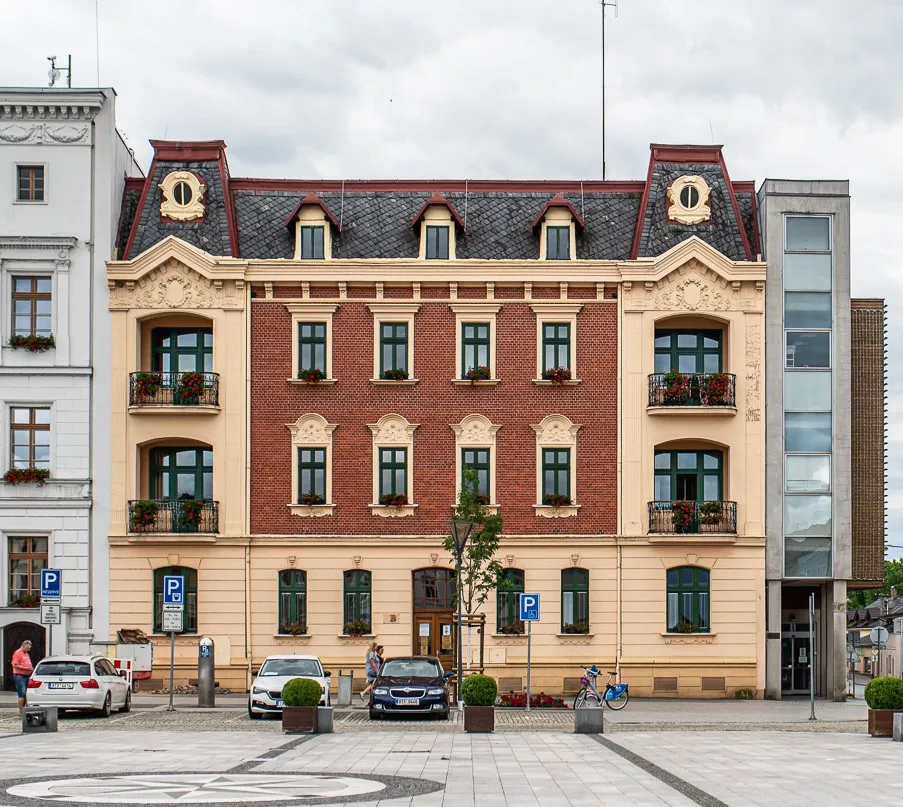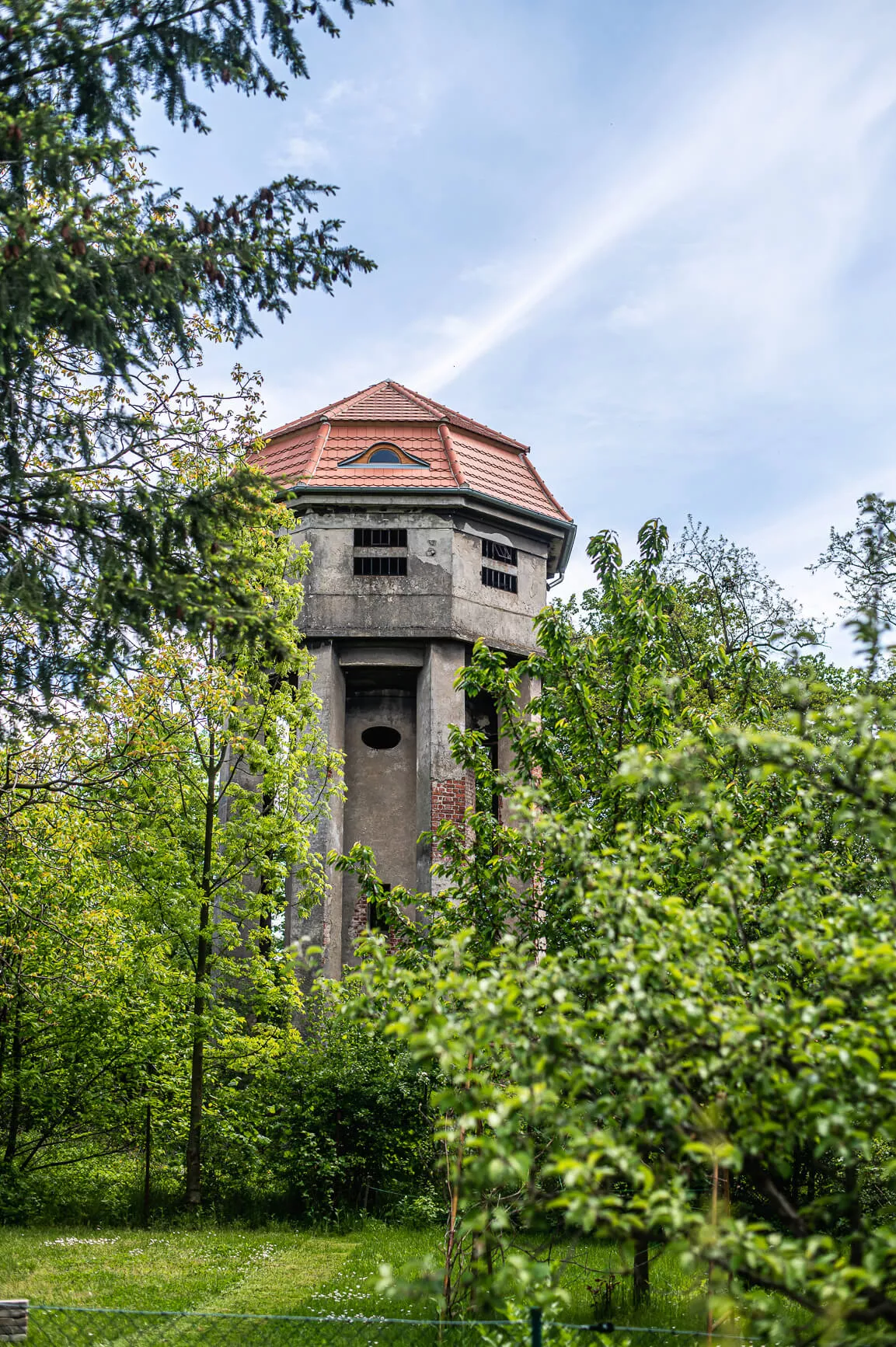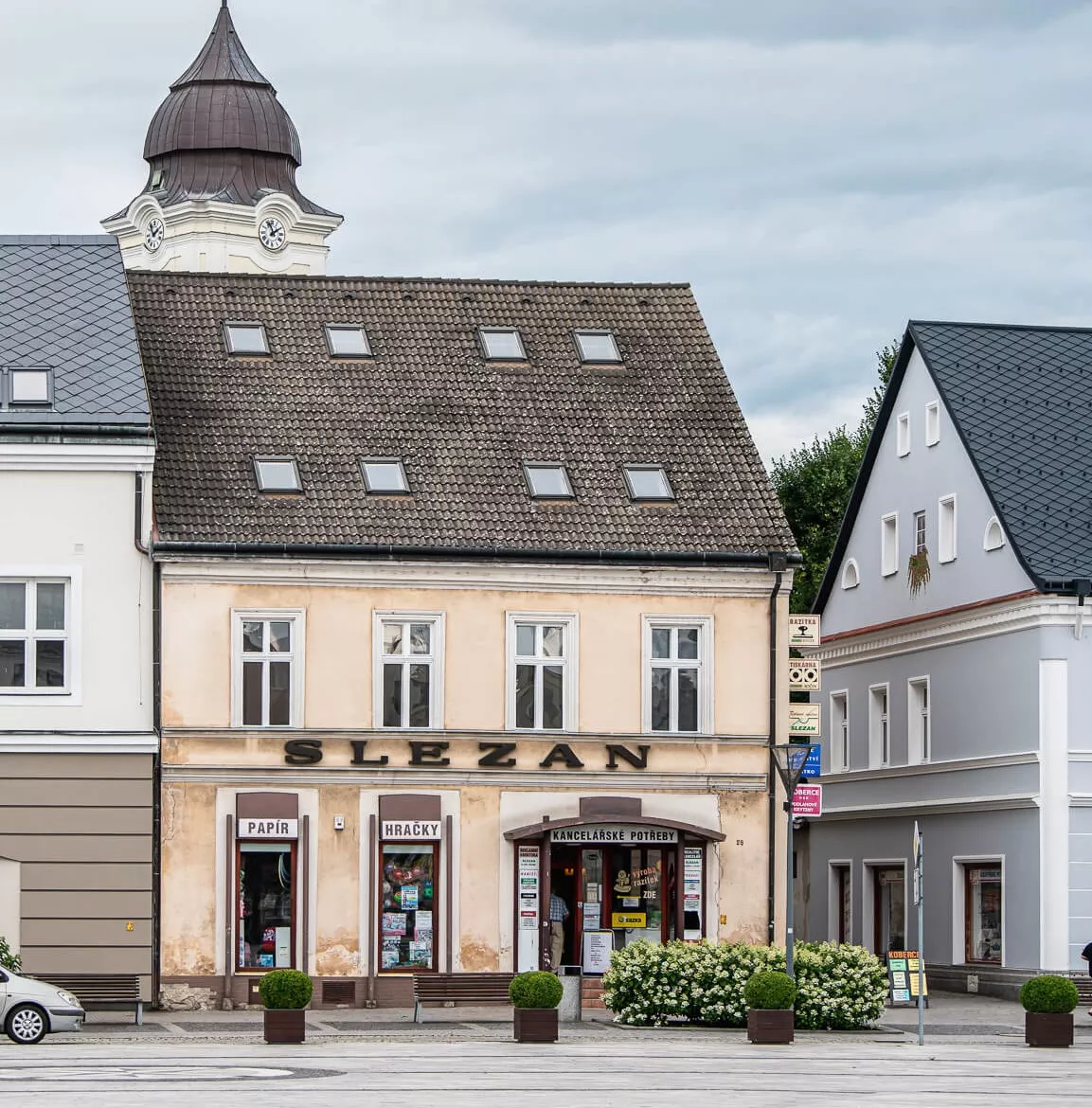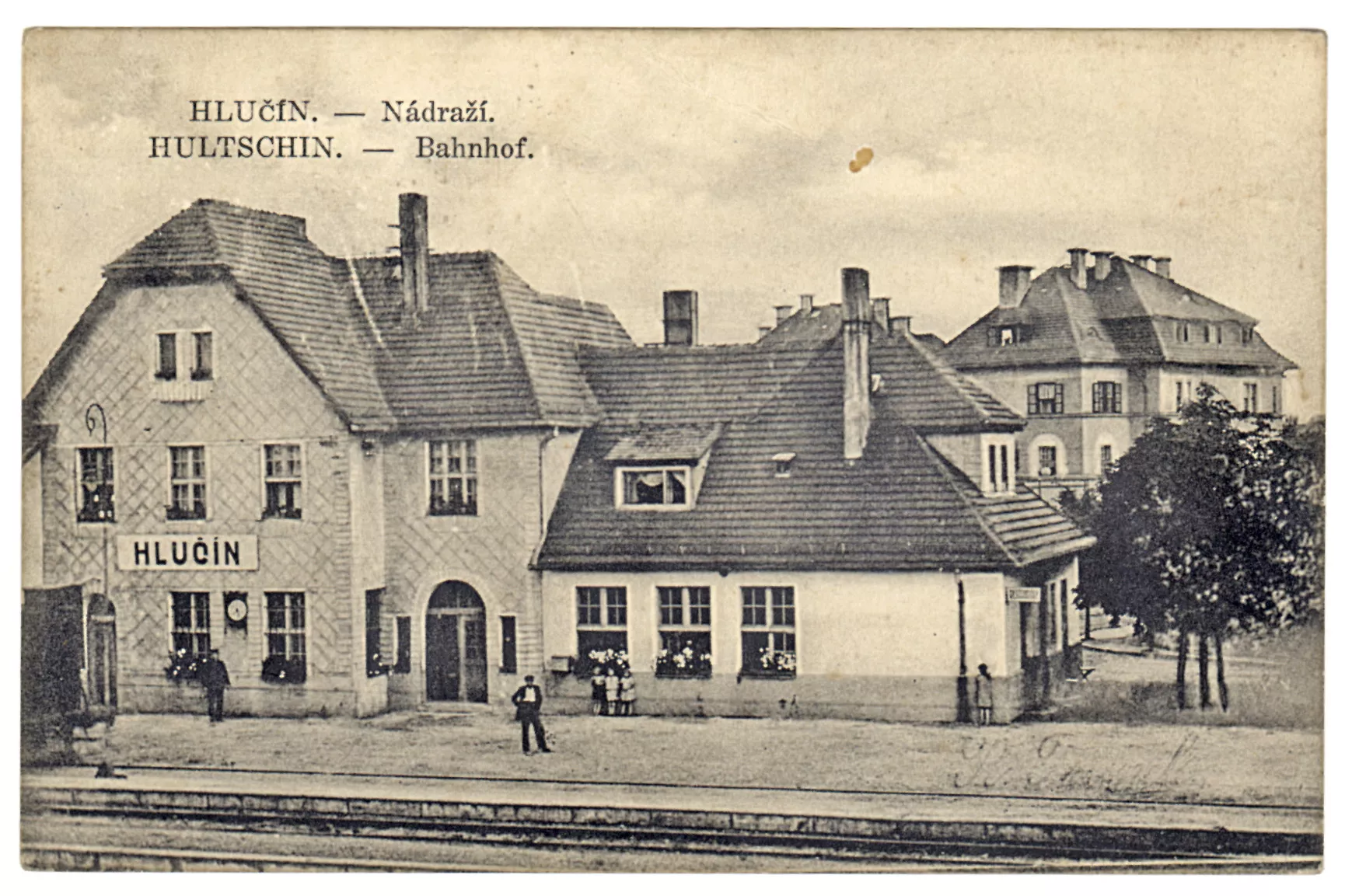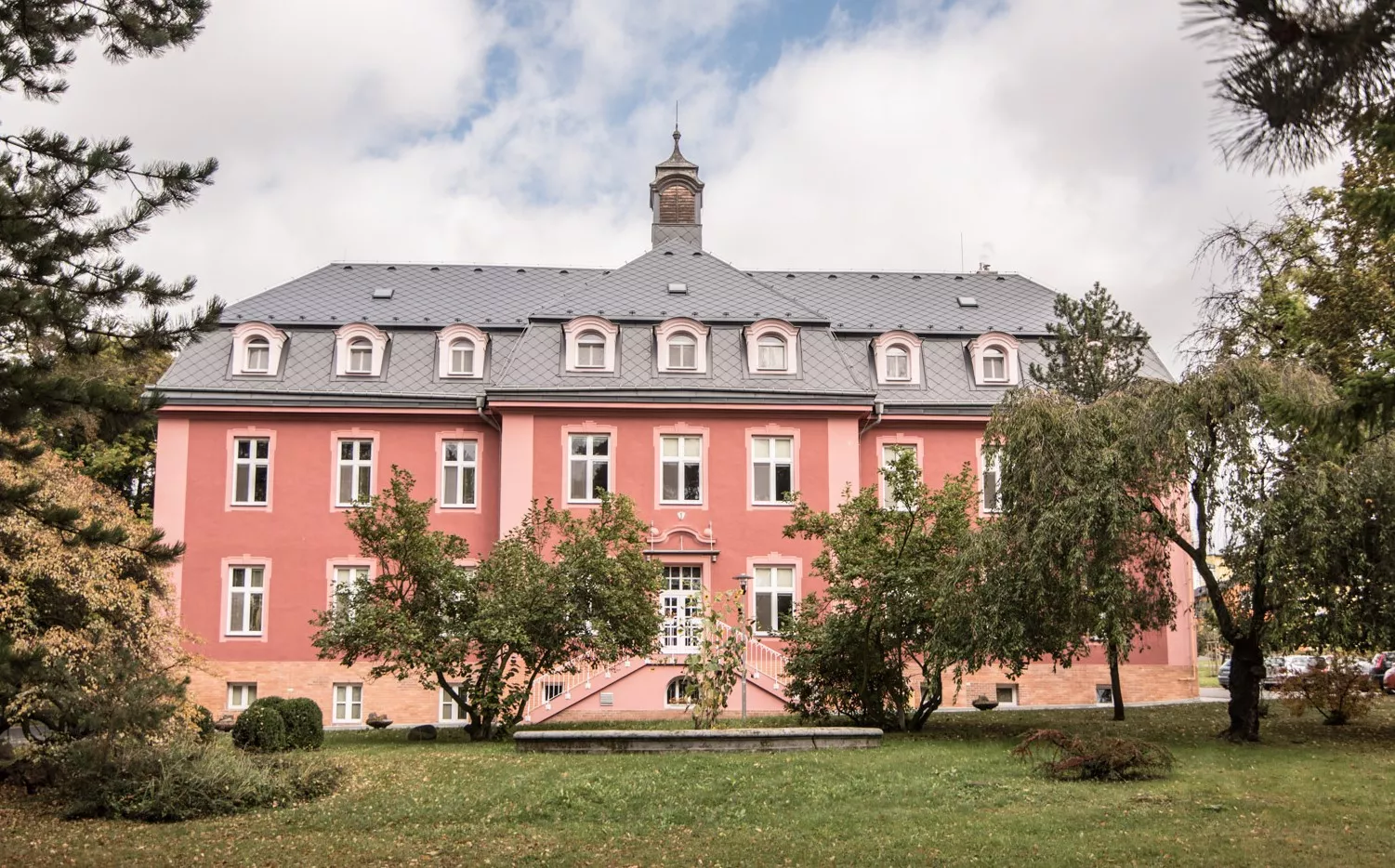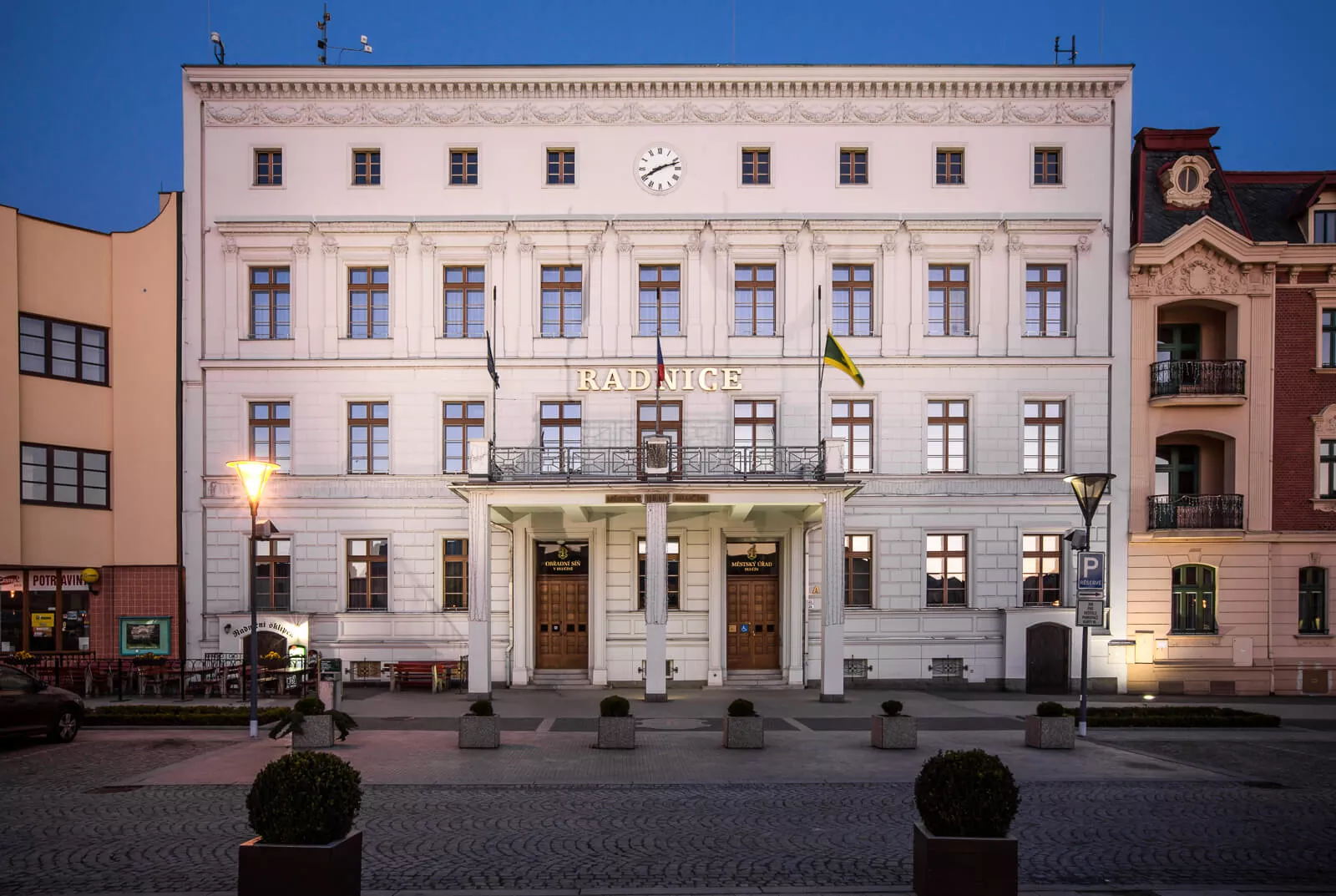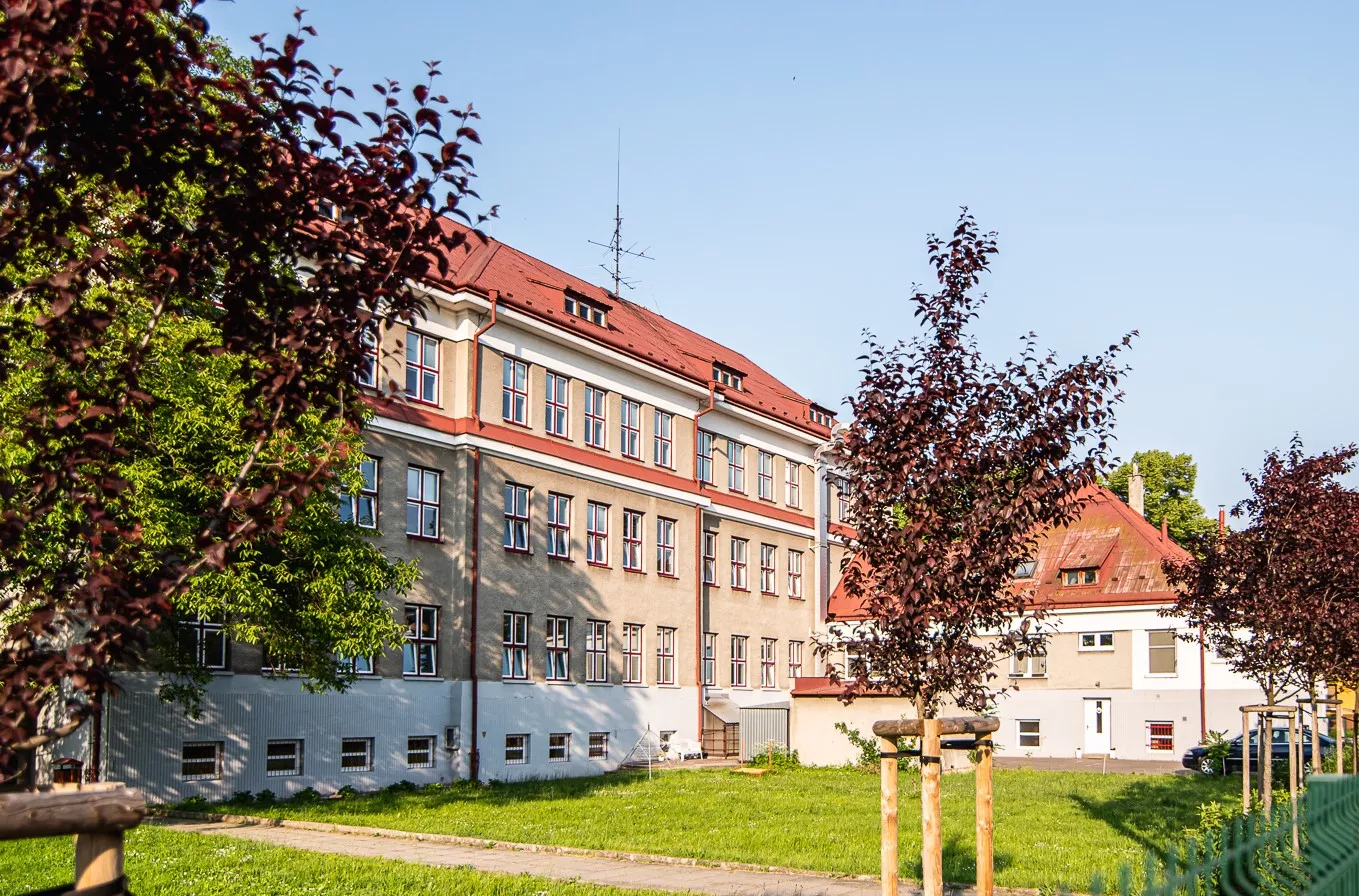The construction of the miners’ hospital was promoted by the management of the Anselm mine in Petřkovice together with the Oberschlesischer Knappschaftsverein (Upper Silesian Miners’ Association) and Hlučín’s mayor, Stanislav Woytych (1850–1909). It was built in 1888 on land belonging to Salomon Albert Rothschild (1844–1911), co-owner of the mines.
The hospital was a simple, functional two-storey building with a basement, a raised ground floor, and a low gabled roof. Two corner staircases led to the entrances, with a projecting four-bay risalit between them containing a large convalescent ward. Built of exposed brick, the structure bore keystones carved with crossed miners’ hammers above each entrance. Because of its limited capacity and, above all, the considerable distance between Petřkovice and Hlučín, which could prove fatal in serious accidents, the mine manager Georg Klewitz (1857–1926) campaigned for a new hospital to be built directly in Petřkovice. That facility was constructed in 1907–1908 and remained in operation until 1996.
In 1908, the Prussian state purchased the Hlučín building and converted it into a district hospital. It was later altered in appearance and enlarged according to an anonymous design by the architectural department of the Provincial Office in Brno (1933). A storey was added above the southern risalit, the south-east entrance removed, and the structure’s overall form was unified. The architect respected the original materials and decorative black-glazed brick bands, but the new upper floor was pierced with large rectangular windows under concrete lintels, replacing the earlier narrow ones and their segmental arches. The final extension was made in 1939, when a two-storey cylindrical risalit for an operating theatre was added to the western façade. The modest project was signed by government building councillor Hallermann, head of the State High Building Office in Ratibor. After the construction of a modern polyclinic at the turn of the 1970s, the hospital served as one of its departments, popularly known as “the red building.”

